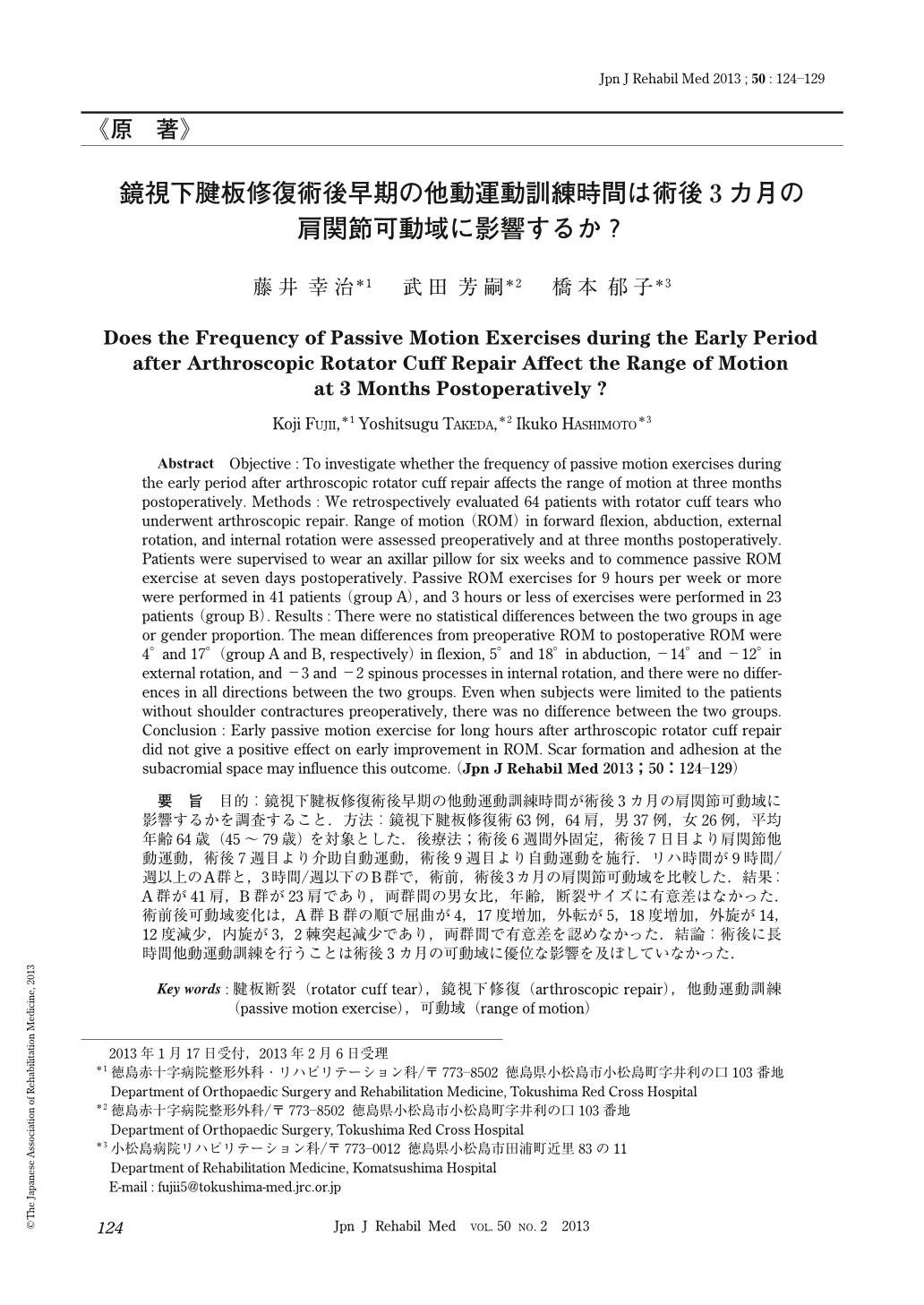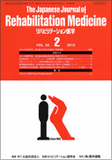Japanese
English
- 販売していません
- Abstract 文献概要
- 1ページ目 Look Inside
- 参考文献 Reference
要旨 目的:鏡視下腱板修復術後早期の他動運動訓練時間が術後3カ月の肩関節可動域に影響するかを調査すること.方法:鏡視下腱板修復術63例,64肩,男37例,女26例,平均年齢64歳(45~79歳)を対象とした.後療法;術後6週間外固定,術後7日目より肩関節他動運動,術後7週目より介助自動運動,術後9週目より自動運動を施行.リハ時間が9時間/週以上のA群と,3時間/週以下のB群で,術前,術後3カ月の肩関節可動域を比較した.結果:A群が41肩,B群が23肩であり,両群間の男女比,年齢,断裂サイズに有意差はなかった.術前後可動域変化は,A群B群の順で屈曲が4,17度増加,外転が5,18度増加,外旋が14,12度減少,内旋が3,2棘突起減少であり,両群間で有意差を認めなかった.結論:術後に長時間他動運動訓練を行うことは術後3カ月の可動域に優位な影響を及ぼしていなかった.
Abstract Objective : To investigate whether the frequency of passive motion exercises during the early period after arthroscopic rotator cuff repair affects the range of motion at three months postoperatively. Methods : We retrospectively evaluated 64 patients with rotator cuff tears who underwent arthroscopic repair. Range of motion (ROM) in forward flexion, abduction, external rotation, and internal rotation were assessed preoperatively and at three months postoperatively. Patients were supervised to wear an axillar pillow for six weeks and to commence passive ROM exercise at seven days postoperatively. Passive ROM exercises for 9 hours per week or more were performed in 41 patients (group A), and 3 hours or less of exercises were performed in 23 patients (group B). Results : There were no statistical differences between the two groups in age or gender proportion. The mean differences from preoperative ROM to postoperative ROM were 4° and 17° (group A and B, respectively) in flexion, 5° and 18° in abduction, -14° and -12° in external rotation, and -3 and -2 spinous processes in internal rotation, and there were no differences in all directions between the two groups. Even when subjects were limited to the patients without shoulder contractures preoperatively, there was no difference between the two groups. Conclusion : Early passive motion exercise for long hours after arthroscopic rotator cuff repair did not give a positive effect on early improvement in ROM. Scar formation and adhesion at the subacromial space may influence this outcome.

Copyright © 2013, The Japanese Association of Rehabilitation Medicine. All rights reserved.


